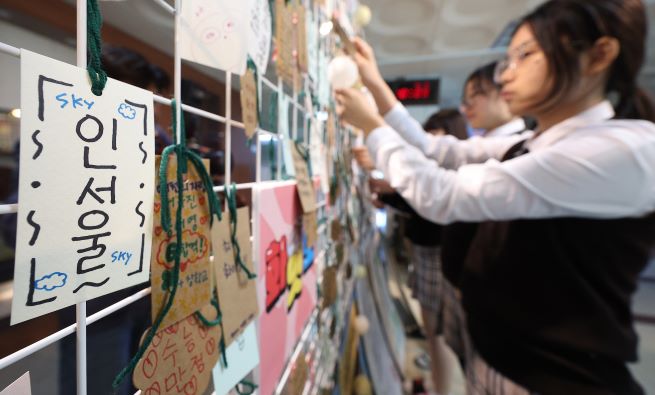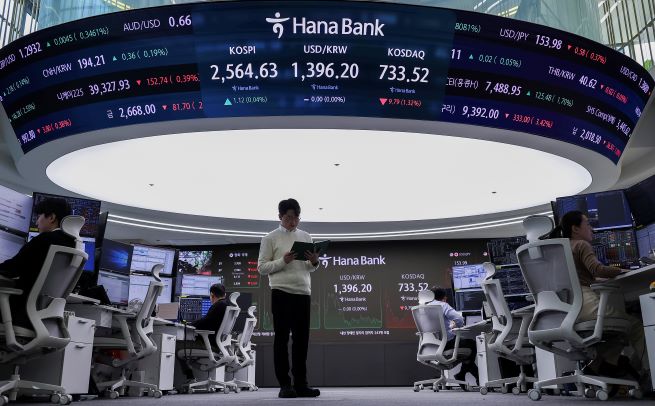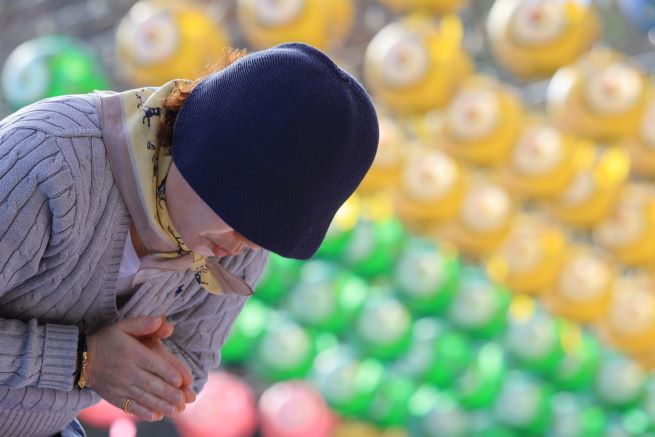
On the morning of 7 November, a week ahead of the College Scholastic Ability Test (CSAT), second-year students hang various charms on a bulletin board in a high school in Daegu, South Korea, to cheer on the third-year students who are taking this year’s CSAT. (Yonhap)
SEOUL, Nov. 10 (Korea Bizwire) – As South Korea prepares for its annual College Scholastic Ability Test (CSAT), market analysts are noting a peculiar pattern: the stock market tends to perform poorly on the day of the crucial national exam.
The phenomenon, which has caught the attention of South Korea’s financial sector, is largely attributed to the exam date frequently coinciding with options expiration day, typically characterized by heightened market volatility.
This year’s CSAT, scheduled for November 14, will see trading hours delayed by one hour across all major markets – the Korea Composite Stock Price Index (KOSPI), KOSDAQ, and KONEX – running from 10 a.m. to 4:30 p.m. The adjustment, an annual tradition, extends to pre-market and after-hours trading sessions.
An analysis of the past decade’s trading data reveals a striking pattern: the KOSPI has declined on five out of ten CSAT days since 2014, with an average movement of -0.52%. Notably, not once during this period has the index surged by more than 1% on exam day, suggesting a bearish bias despite an even split between positive and negative trading sessions.

Monitors in the dealing room of Hana Bank’s headquarters in Jung-gu, Seoul, on the afternoon of November 7 show the Kospi and KOSPI indices and the Korean won/dollar trading price at the end of the day’s trading. (Yonhap)
The most significant recent decline occurred in 2022, when the KOSPI fell 1.39% amid concerns over U.S. retailer Target’s disappointing earnings and gloomy outlook. Similar drops were recorded in 2021 (-0.51%) and 2014 (-0.34%).
Market experts attribute this trend to the overlap with options expiration day, which falls on the second Thursday of each month. “The convergence of CSAT and options expiration day has led to increased market volatility and more frequent downward movements,” explained a securities industry representative.
Program trading activities typically spike on options expiration days as traders close both options and underlying stock positions.
This year’s market dynamics could be further complicated by the U.S. presidential election, with analysts predicting continued market volatility. “The recent market downturn is likely to persist, influenced by both domestic factors and the significant event of the U.S. election,” the industry source added.

A parent prays for a test-taker at a temple in Gangbuk-gu, Seoul, on November 10, four days ahead of the 2025 college entrance examination. (Yonhap)
Ashley Song (ashley@koreabizwire.com)






